
W ant to know how to start a blog on Facebook?
With over 3.07 billion monthly active users, Facebook is a social media giant with lots of benefits for hopeful bloggers. And as you’ll see below, starting a Facebook blog is surprisingly easy.
In this article, we’ll list the simple steps to get you started and share how you can make money. We’ll also help identify who should start a Facebook blog, describe its advantages, and more!
(Spoiler alert: you’re going to be pleasantly surprised).
In This Guide:
What is a Facebook Blog?
Before we discuss starting a blog on Facebook, let’s clarify what we mean by “Facebook blog.”
Facebook isn’t as comprehensive as a self-hosted WordPress blog. However, when used as a complementing platform, the social network can give you all the tools to create, publish, and promote your blog content.
It’s another excellent source of referral traffic that even the most successful blogs use to grow.

Key features include:
- Facebook posts,
- Ads,
- Comments,
- Live video,
- Stories,
- and Creator Studio, especially with its detailed insights.
So when we use the term “Facebook blog,” we mean a Facebook account or page where you can publish your content.
And given the state of search engines like Google and the ever-decreasing lack of traffic, it seems to be bringing bloggers using SEO. There’s no better time to explore its potential!
So, let’s not waste any time and jump right into it.
How to Create a Facebook Blog: Step-by-Step Guide
Let’s walk you through the entire process.
Create a Facebook Page
1. Log in to your Facebook account.
2. Click on the Menu button in the top right corner and select “Page.”

3. Fill in your page name and category (e.g., your blog niche).

4. Enter your Bio info – although it is optional. But I recommend it as it can be a quick way for visitors to get to know you. For instance, here’s Blog Tyrant’s page Bio:

6. Press ‘Create Page’
Complete Your Profile
Just note that the steps below are largely optional.
7. You can now add contact details for your target audience to reach you (if you want), including hours of operation.
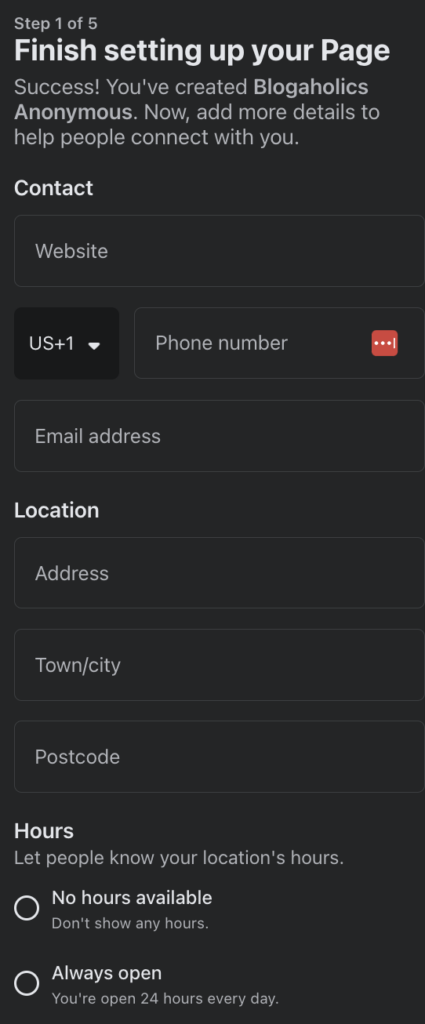
8. Add a profile picture and cover photo that represents your blog’s branding and will entice visitors to stick around. So, make it snazzy!
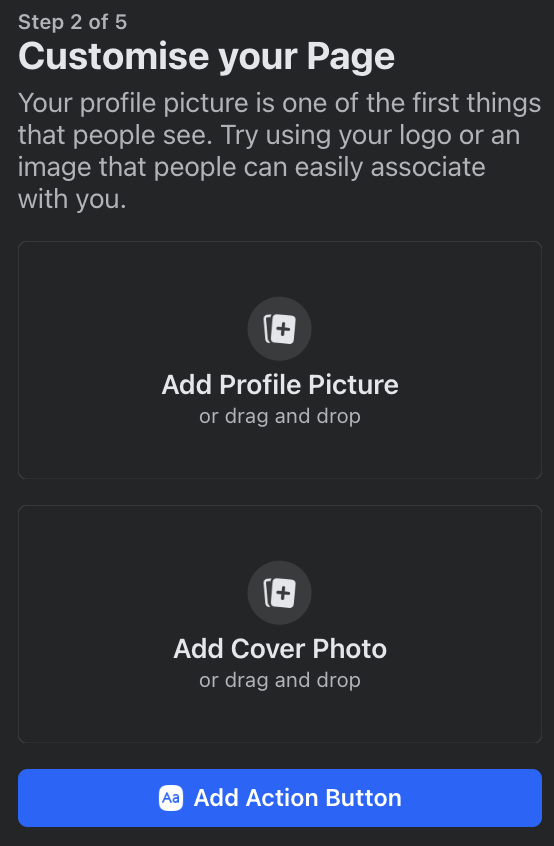
9. Relating back to number 7 – you can connect your WhatsApp (since it’s also owned by Meta), but I wouldn’t recommend it unless you’re running a business and want customers calling you with inquiries.
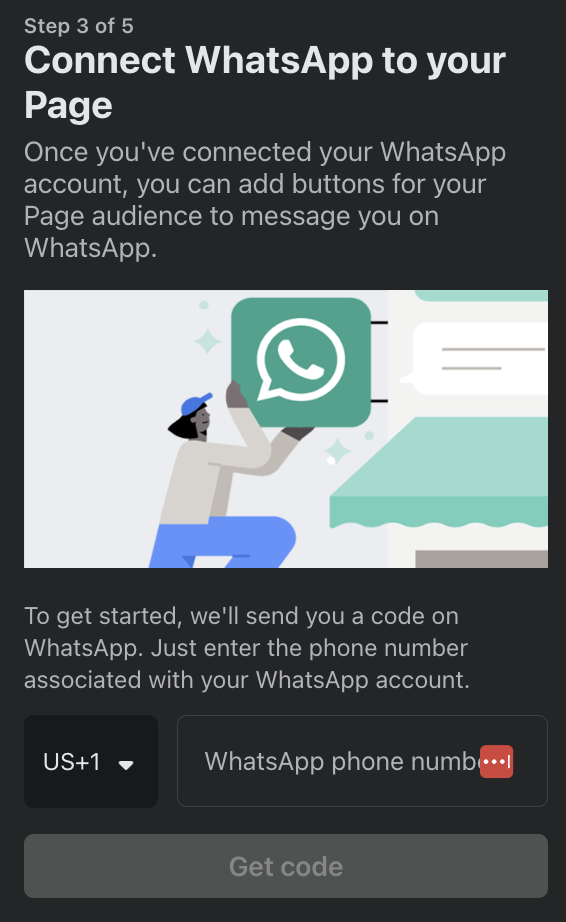
10. Invite your friends to like and follow your page from the jump. This way, you can get some early traction.
And it’s important to note: You may be wondering how to change your page’s vanity URL. Well, you may need to wait just a bit because to combat name squatting – there’s a system in place that requires at least 25 followers to be able to change it.
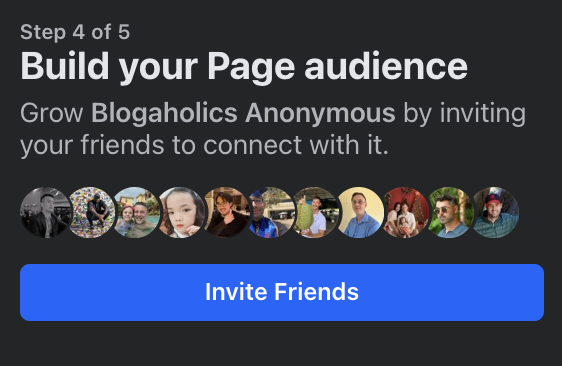
Once you have 25, you can change the URL to your blog name or anything else you like!

11. Last step of the set up is choosing whether you want to receive Facebook notifications as well as marketing info emailed to you.
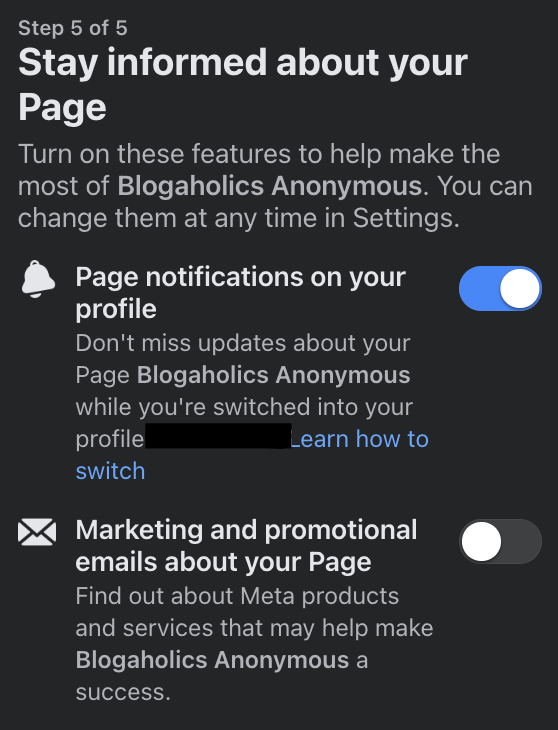
Start Publishing!
Now, the real magic can begin!
12. Click on the “Write a Post” box at the top of the page. And start posting engaging content relevant to your blog’s theme.
One easy tip is to repurpose your most popular blog content into shorter posts. Over time, as your Facebook blog grows you’ll get ‘Facebook Insights’ into your page demographics.
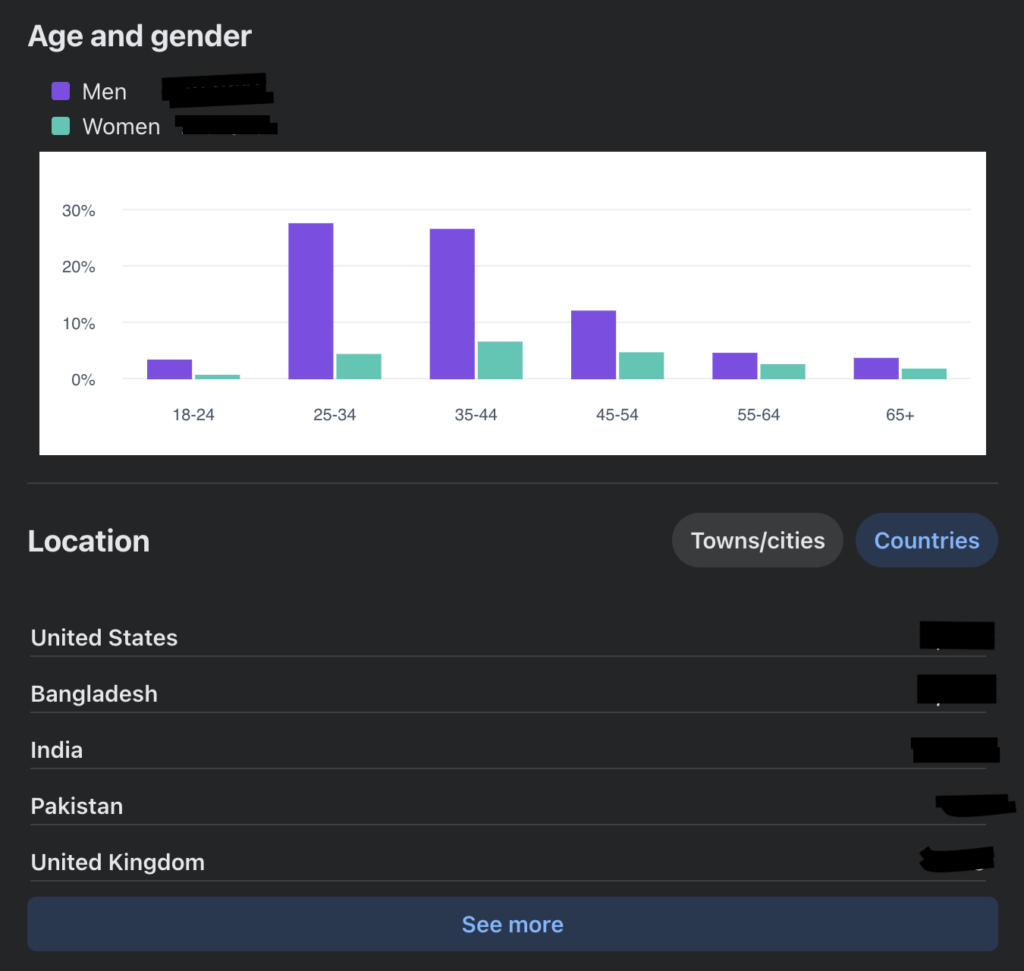
This way, you’ll be able to curate content that works for similar audiences according to your blog’s Google Analytics.
But in the meantime, start experimenting. Make sure to add eye-catching images, video content, or links in the comments to enhance your post.
It’s recommended to add the links in the comments as algorithms of social media platforms will often ‘demote’ posts trying to get people to click off the platform.
Promote Your Facebook Blog
13. Aside from the initial boost you can get by asking friends and family to follow your page, you can also join relevant Facebook groups and help others in need. They’ll be more likely to click through and check out your stuff.
14. You can also use Facebook ads to reach a wider audience and use it as a promotional tool for particular posts and content you find noteworthy.
15. As always, you’ll want to post regularly with engaging content to keep spreading your organic reach. Think of it as a search engine like Google – consistency is key!
Engage with Your Audience
16. You’ll want to ensure you respond to comments and messages quickly.
17. Encourage discussions by asking questions or creating polls. Everyone knows that everyone loves a good poll. But in all seriousness, if done on a timely or trending topic, polls can provide a helpful boost in engagement rates.
18. Share user-generated content to build a community around your blog because sharing is caring. For this very reason, Facebook pages don’t get nearly the same reach as Facebook groups.
But that doesn’t mean you can’t share guest blogs on your Page.
Just remember that when you’re building or promoting your blog on Facebook, you’ll want the full control that a page affords you!
So, by following these simple steps, you are on the way to growing your blog on Facebook.
Now that we’ve sorted that let’s look at the different ways you can monetize a Facebook blog.
How to Make Money from Your Facebook Blog (with Tips!)
There are many strategies to generate income from your blogging efforts – each catering to different types of blog posts and audience engagement.
Now, let’s make it rain (in the best way possible)!
Selling Products Directly on Facebook
Using Facebook’s Shop feature allows you to sell physical or digital products directly from your page. This feature makes it easy for your followers to browse, purchase, and pay for items without leaving Facebook.
It can be the ideal platform to monetize your audience and reach potential customers who already spend their time there. You can showcase various products, from handmade crafts to digital downloads.
And it can be easy to get started. Here’s a quick guide for how to connect a Shop to your page:
You can also follow along with the steps below!
On the left panel – on the professional dashboard of your page – click Meta Business Suite.
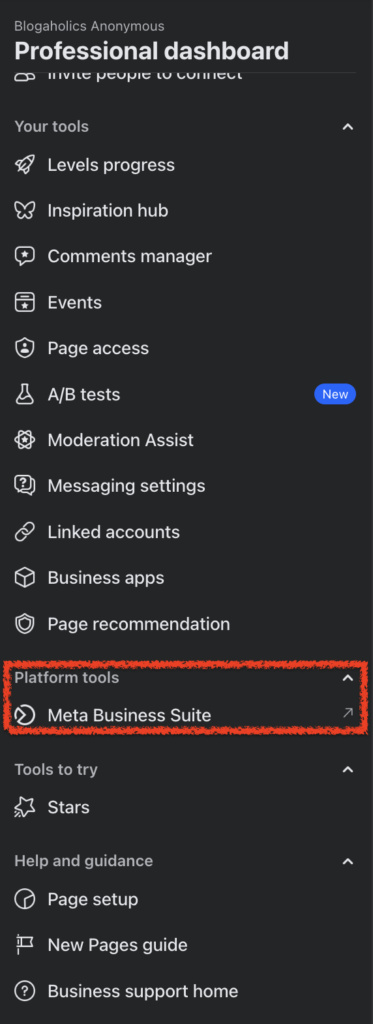
Then you go into your profile and click Commerce:
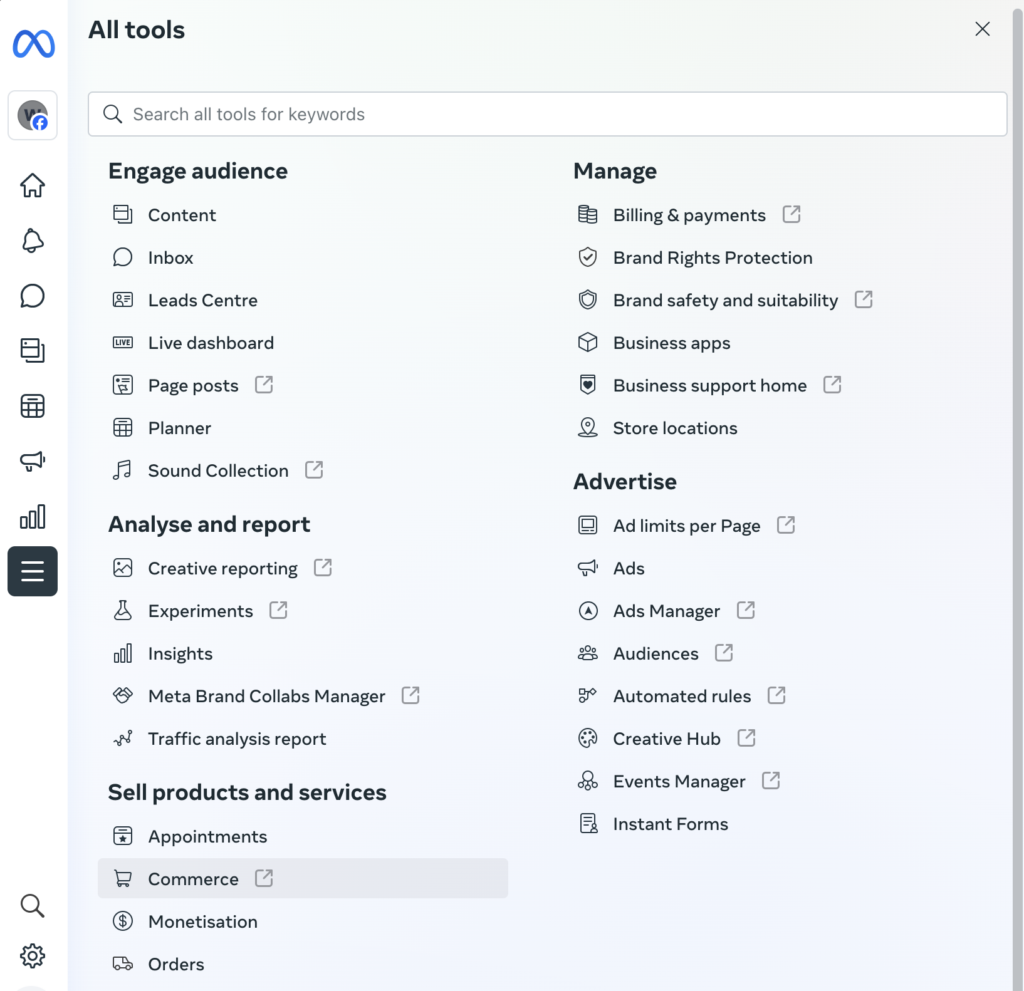
From your Commerce dashboard, you can choose to create a shop to sell physical products or create a catalog.
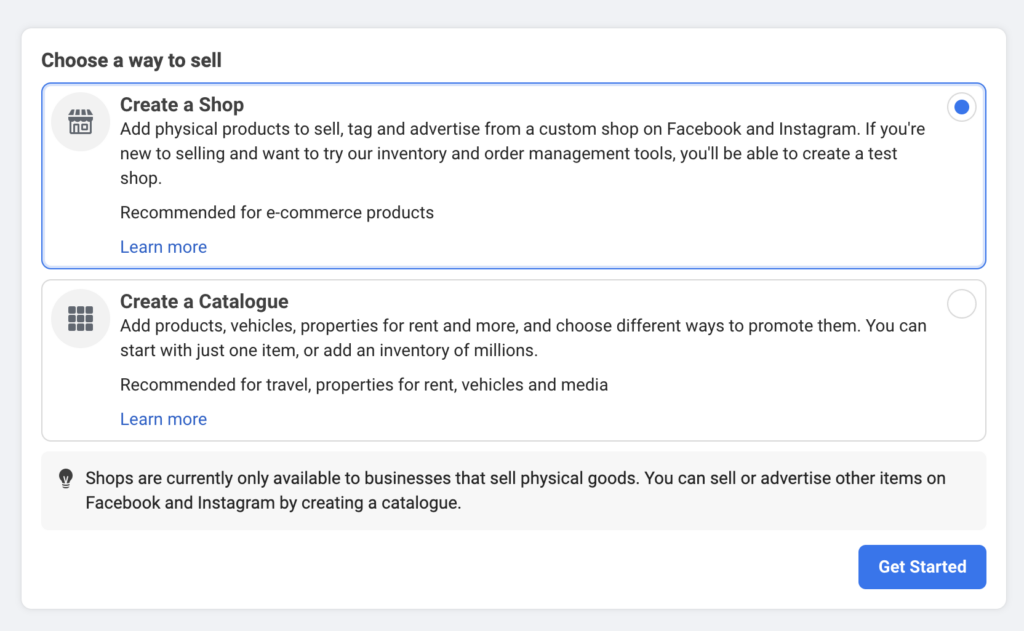
With integrated payment options and customizable shop layouts, setting up and managing your online store is straightforward.
Unfortunately, at the moment, as per Commerce rules, you can’t sell digital products – can certainly sell the best digital products on the Facebook marketplace!
- Tip 1: Use high-quality images and detailed product descriptions to attract buyers.
- Tip 2: Regularly update your product listings and keep your inventory current to maintain interest.
- Tip 3: Offer promotions and discounts and promote them via Facebook ads to encourage first-time buyers and repeat customers.
- Tip 4: Engage with customers through comments and messages to boost engagement rates and build trust and loyalty.
Make Use of Affiliate Marketing Strategies
Promote products from other companies to your blog fans and earn a commission on sales generated through your referral links. It’s like being a matchmaker but for products and people.
To get started, join affiliate programs that align with your blog’s niche and interests. Once you’re approved, you’ll receive unique referral links to share in your posts, stories, and videos (but not ads)!
When discussing products, include personal experiences and reviews to make your recommendations more authentic. If your audience feels your endorsements are genuine, they are more likely to trust and follow your links to purchase.
Track the performance of your affiliate links to understand what resonates with your audience. And use this data to refine your strategies, focusing on promoting products that generate the most interest and sales.
- Tip 1: Share personal experiences and honest reviews to maintain trust with your audience.
- Tip 2: Place affiliate links strategically within your content where they are relevant and useful.
- Tip 3: Monitor performance and adjust your strategy based on what products are popular with your audience.
- Tip 4: Combine affiliate links with engaging content like tutorials, reviews, and how-to guides to increase click-through rates.
- Tip 5: You’ll likely want to share snippets of your best blog posts that include affiliate links and link to them in comments rather than posting affiliate links directly on your page.
Accepting Sponsored Posts and Collaborations
Partner with brands for sponsored posts and collaborations.
Just be sure to choose those that align with your blog’s niche and audience interests. This will help ensure the sponsored content feels natural and engaging to your followers.
Share your genuine experiences and thoughts about the product or service, making the promotion more relatable and trustworthy.
Communicate openly with your audience about these partnerships. Disclose these partnerships as paid ads to maintain transparency and follow the rules.
- Tip 1: Always disclose sponsored posts to maintain transparency and trust.
- Tip 2: Choose brands and products that align with your blog’s theme and audience interests.
- Tip 3: Negotiate terms that include compensation, content expectations, and timelines clearly to avoid misunderstandings.
- Tip 4: Try to work out creative ways to sprinkle in the sponsored content – such as in an office tour.
Display Ads on Your Facebook Blog
You can use Facebook’s Audience Network to monetize your videos with in-stream ads.
You’ll first need to meet certain criteria, though.
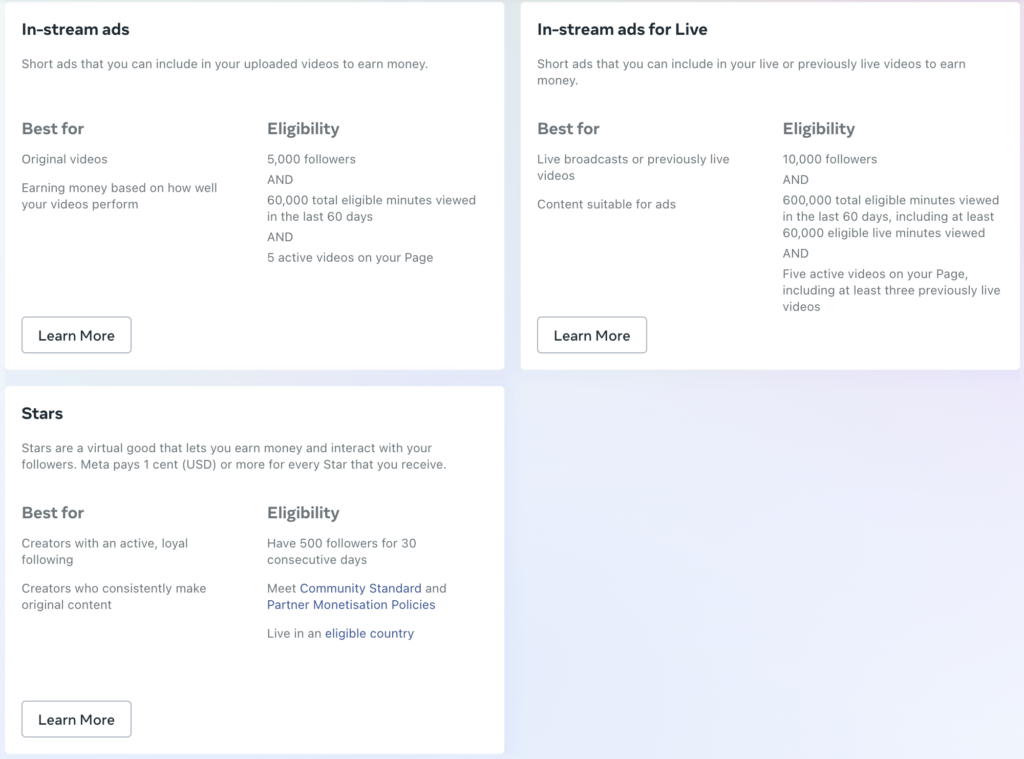
However, once enabled, Facebook will insert ads at natural breaks in your content, ensuring minimal disruption to your viewers while maximizing your earning potential.
To increase your ad revenue, focus on creating engaging and longer videos, which tend to perform better with in-stream ads. Consistently posting high-quality content will attract more viewers and, consequently, more ad impressions.
Monitor your ad performance through Meta’s Ads Manager. This data will help you understand which types of content generate the most revenue, allowing you to tailor your strategy for better results.
We’ve written about this extensively here.
- Tip 1: Create engaging, longer videos to maximize ad revenue, as longer videos can accommodate more ad breaks.
- Tip 2: Analyze ad performance data to understand which content formats generate the most revenue and adjust your strategy accordingly.
- Tip 3: Keep your content family-friendly and advertiser-friendly to attract a broader range of advertisers.
Offer Paid Memberships or Premium Content
Another way to monetize your Facebook blog is by offering paid fan subscriptions for premium content (this is also one of the ways to monetize a Facebook group).
As long as you’re compliant with Facebook’s monetization policies, you can create exclusive content for dedicated followers and charge a subscription fee.
This could include special posts, videos, or access to a private group where you share industry ‘secrets’, insights, and tips.
- Tip 1: Promote your membership offering through regular posts and engaging content to attract subscribers.
- Tip 2: Offer a mix of free and premium content to give potential subscribers a taste of the value they can expect.
- Tip 3: Engage with your members regularly through exclusive Q&A sessions, live videos, and personalized content to retain subscribers.
- Tip 4: Provide consistent value to your subscribers to justify the membership fee and encourage word-of-mouth referrals.
Receive Facebook Stars from Your Audience
Use the Facebook Stars feature to receive virtual gifts that can be converted into real money.
Each star your blog audience sends you translates into actual revenue, providing a fun and interactive way for your followers to support your content. This feature is especially effective during live streams or when you post engaging videos.
To maximize the use of Facebook Stars, encourage your viewers to participate by acknowledging and thanking them during your broadcasts.
Creating a sense of community and appreciation can boost the number of stars you receive, increasing your potential earnings.
- Tip 1: Acknowledge and thank viewers who send stars to foster community support and appreciation.
- Tip 2: Create engaging and interactive live streams where viewers feel compelled to support you with stars.
- Tip 3: Use the stars received to fund improvements in your content, such as better equipment or exclusive content, and let your audience know how their support is helping.
- Tip 4: Set goals or milestones for star collections and celebrate reaching these goals with your audience to encourage more contributions.
Pray You’re Accepted To The Facebook Bonus Program
Last but not least is the Facebook Performance Bonus Program. This is an invite-only monetization strategy for pages and profiles based on engagement rates. Here’s a breakdown of how it works:
And as long as you’re compliant with Facebook’s monetization policies, you can earn thousands of dollars each month from views, comments, reactions, and shares on your posts. (Meta recently lifted a $30k cap, so there’s no real limit for how much you can make). But just note that Reels and Stories are not monetizable with this program.
- Once you’re invited, you’ll simply complete the onboarding process, including providing your payout details.
- Ensure you always follow Facebook’s Partner Monetization Policies and Content Monetization Policies.
- Continue creating and posting engaging content and get paid for your efforts.
Here’s a quick video breakdown of the program:
But in the meantime (until you can be invited), your main focus should be on growing your audience and creating quality content to increase engagement and your chances of getting the opportunity.
- Tip 1: Focus on creating engaging content that encourages interactions like comments, reactions, and shares to maximize your earnings potential.
- Tip 2: Experiment with different types of content to see what resonates best with your audience and generates the most engagement.
- Tip 3: Engage with your audience in the comments section to boost overall interaction on your posts.
Pros and Cons of Blogging on Facebook
Now that we’ve listed out the steps to get started, it’s important to be clear about the pros and cons.
This way, you can be sure it matches your blogging needs before you put in your time and energy into it.
Pros of Starting a Facebook Blog
Starting a blog on Facebook comes with several advantages that make it an appealing choice for many bloggers.
These include:
Visibility:
Posts appear directly in your followers’ news feeds, driving immediate engagement and reactions. Think of it as a VIP pass to everyone’s daily scroll.
Simplicity:
Creating a post is straightforward, requiring just a few clicks. Most Facebook users are familiar with this process, making it accessible for those who want to start blogging without a steep learning curve.
Interactivity:
Posts support comments, likes, and shares, fostering immediate interaction and feedback. This interactivity can help you gauge your blog audience’s response and adjust your blog content accordingly.
Multimedia:
Easily add photos, videos, and links to enhance content and make it more engaging. Because who doesn’t love a good cat video?
Cons of a Facebook Blog
Despite the advantages we’ve listed, starting a blog on Facebook also has drawbacks that you should consider before you get started.
Length Limitations:
Facebook posts are better suited for shorter content, making conveying complex ideas or detailed information challenging. (Unless you’re writing a haiku blog. In which case, you’re golden.)
Organization:
It can be difficult to organize and find specific Facebook blog articles over time. Your epic blog entry about avocado toast might get lost in the shuffle.
Depth:
Posts may lack the depth and formatting options that more traditional blogging platforms offer. Sometimes, you just need more than bullet points and emojis.
Control and Ownership:
You do not own the platform, and your content is subject to Facebook’s rules and policies. It’s their sandbox, and you’re just playing in it.
Algorithmic Changes:
Changes in Facebook’s algorithms can affect the visibility and reach of your content (and, therefore, blog traffic). This can sometimes feel like you’re trying to win a game where the rules keep changing.
Facebook Account vs. Facebook Page for Blogging
If you’ve made it this far, it is safe to say you’re convinced you want to start blogging on Facebook.
The last question we need to ask is: Should you use your existing personal profile Facebook account to post blog content, or is it better to create a unique Facebook page for your blog?
Blogging from a Personal Facebook Account
If your audience is mainly your Facebook friends, use your personal social media account.
Using your personal Facebook account as a blog is straightforward and convenient. And creating blog posts on your public profile lets you share your opinion pieces, personal anecdotes, stories, and updates directly with your friends and family.
It’s what most people’s wacky aunt does.
But this method allows for immediate interaction through comments, likes, and shares, fostering a sense of community.
However, you should keep in mind that you can only have up to 5,000 friends, which may limit your audience’s reach.
So, it’s an excellent option if your goal is to connect with people you already know and keep your blogging experience informal and personal. But again, it can be quite limited in reaching a truly wide audience.
Blogging from a Facebook Page
A Facebook page is better for a blog if you want to reach more people since pages have no limit on followers.
As we’ve shown above, anyone can create a Facebook page, not just businesses or public figures.
Pages offer you lots of tools for making money and tracking your content’s performance.
And using a Facebook page helps separate your personal and professional online presence.
Final Say on How to Start Blogging on Facebook
So, in this article, we’ve mapped out how to start a blog on Facebook and shared ideas about how to monetize it.
You can create engaging content and generate income by making the most of Facebook’s features, such as posts, ads, and the Shop feature.
Whether you choose to sell products, implement affiliate marketing, or use Facebook Stars, there are plenty of opportunities to turn your Facebook blog into a successful venture.
So, if you are thinking about starting a blog on Facebook, don’t overthink it. Get started today!


0 Comments
Join in. The comments are closed after 30 days.